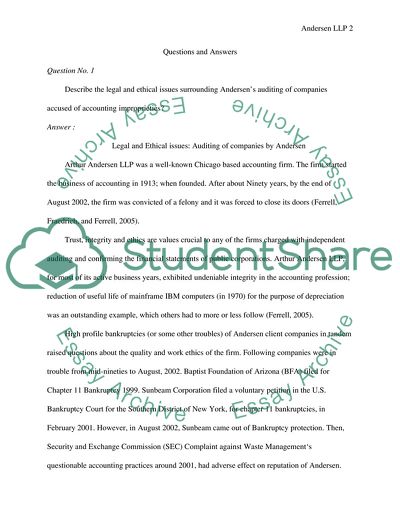Cite this document
(“Andersen LLP: Questionable Accounting Practices Essay”, n.d.)
Retrieved from https://studentshare.org/finance-accounting/1553671-read-case-study-and-answer-3-questions
Retrieved from https://studentshare.org/finance-accounting/1553671-read-case-study-and-answer-3-questions
(Andersen LLP: Questionable Accounting Practices Essay)
https://studentshare.org/finance-accounting/1553671-read-case-study-and-answer-3-questions.
https://studentshare.org/finance-accounting/1553671-read-case-study-and-answer-3-questions.
“Andersen LLP: Questionable Accounting Practices Essay”, n.d. https://studentshare.org/finance-accounting/1553671-read-case-study-and-answer-3-questions.


